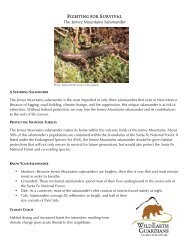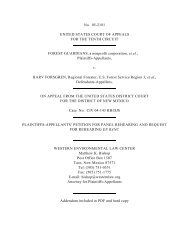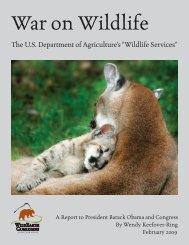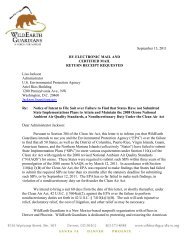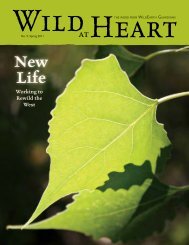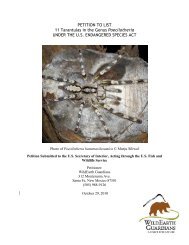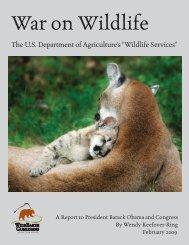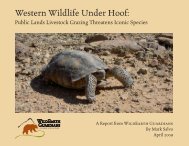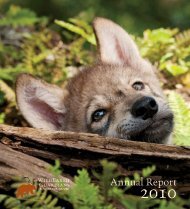PETITION TO LIST THE JEMEZ MOUNTAINS SALAMANDER ...
PETITION TO LIST THE JEMEZ MOUNTAINS SALAMANDER ...
PETITION TO LIST THE JEMEZ MOUNTAINS SALAMANDER ...
You also want an ePaper? Increase the reach of your titles
YUMPU automatically turns print PDFs into web optimized ePapers that Google loves.
WildEarth Guardians Petition to List<br />
Jemez Mountains Salamander Under the ESA<br />
3<br />
Introduction<br />
The Jemez Mountains salamander is endemic to north-central New Mexico and is<br />
considered a relict species. This is a small, lungless salamander, in the family<br />
Plethodontidae and is found only in the mesic forested habitat of the Jemez Mountains.<br />
In contrast to many amphibians, the Jemez Mountains salamander employs terrestrial<br />
eggs to reproduce but like other amphibians is a poikilotherm, and its body temperature<br />
fluctuates with that of the environment. The Jemez Mountains salamander has an<br />
extremely narrow critical thermal range, which makes this species highly susceptible to<br />
environmental fluctuations. The Jemez Mountains salamander, like all lungless<br />
salamanders, must breath through cutaneous respiration, which requires the salamander’s<br />
skin to remain moist. Moisture also plays a very important role in reproduction for this<br />
terrestrial salamander, particularly for critical stages in mating and hatching of young.<br />
Within the Jemez Mountains range, Plethodon neomexicanus has a limited distribution.<br />
The total distribution of this salamander is estimated to consist of 400– 484 square miles<br />
(650-780 square kilometers). Although some estimates put the known distribution of this<br />
species at as little as 200-250 square miles (320-400 square kilometers). This species<br />
exists in fragmented populations in small areas of mixed coniferous forest. Densities<br />
have been found to be approximately 0.05/m 2 in areas where preferred microhabitat is<br />
present. The Jemez Mountains salamander’s preferred microhabitat is characterized by<br />
relatively high-humidity soils with a specific rock structure that contains deep, igneous<br />
subsurface rock. Litter depth, overstory cover, pH, soil temperature, lichen/moss<br />
occurrence, and decay state and moisture content of logs have been demonstrated as<br />
important factors in the presence or absence of salamander populations.<br />
More than 90% of known populations of the Jemez Mountains salamander are<br />
concentrated on federal lands managed by the SFNF. Six fragmented populations have<br />
been identified within these lands. These areas are considered “Essential” habitat by the<br />
2000 CMP for the Jemez Mountains salamander, which was signed by FWS, USFS, and<br />
NMDGF in 2000. The “Essential” habitat consists of 30,510 acres, and 8,280 acres of<br />
“Priority Survey” area which is considered to contain suitable habitat in 2000, but had not<br />
been comprehensively surveyed for the presence of Jemez Mountains salamanders. An<br />
additional 108,100 acres were identified as “Survey” zones. Other small populations<br />
exist outside of the SFNF on National Park Service, Department of Energy, and Tribal<br />
lands.<br />
As a nocturnal and subterranean species, it is difficult to estimate population size,<br />
abundance and density for the Jemez Mountains salamander. It is estimated that the total<br />
population within the Jemez Mountains range does not exceed 10,000 individuals. In<br />
areas of preferred habitat, studies have shown some subpopulations to consist of<br />
anywhere from 25 – 120 individuals. In other areas, subpopulations of Jemez Mountains<br />
salamanders have been measured at less than ten individuals. Densities, in areas with<br />
preferred microhabitat, have been approximated to be 0.05/m 2 .



